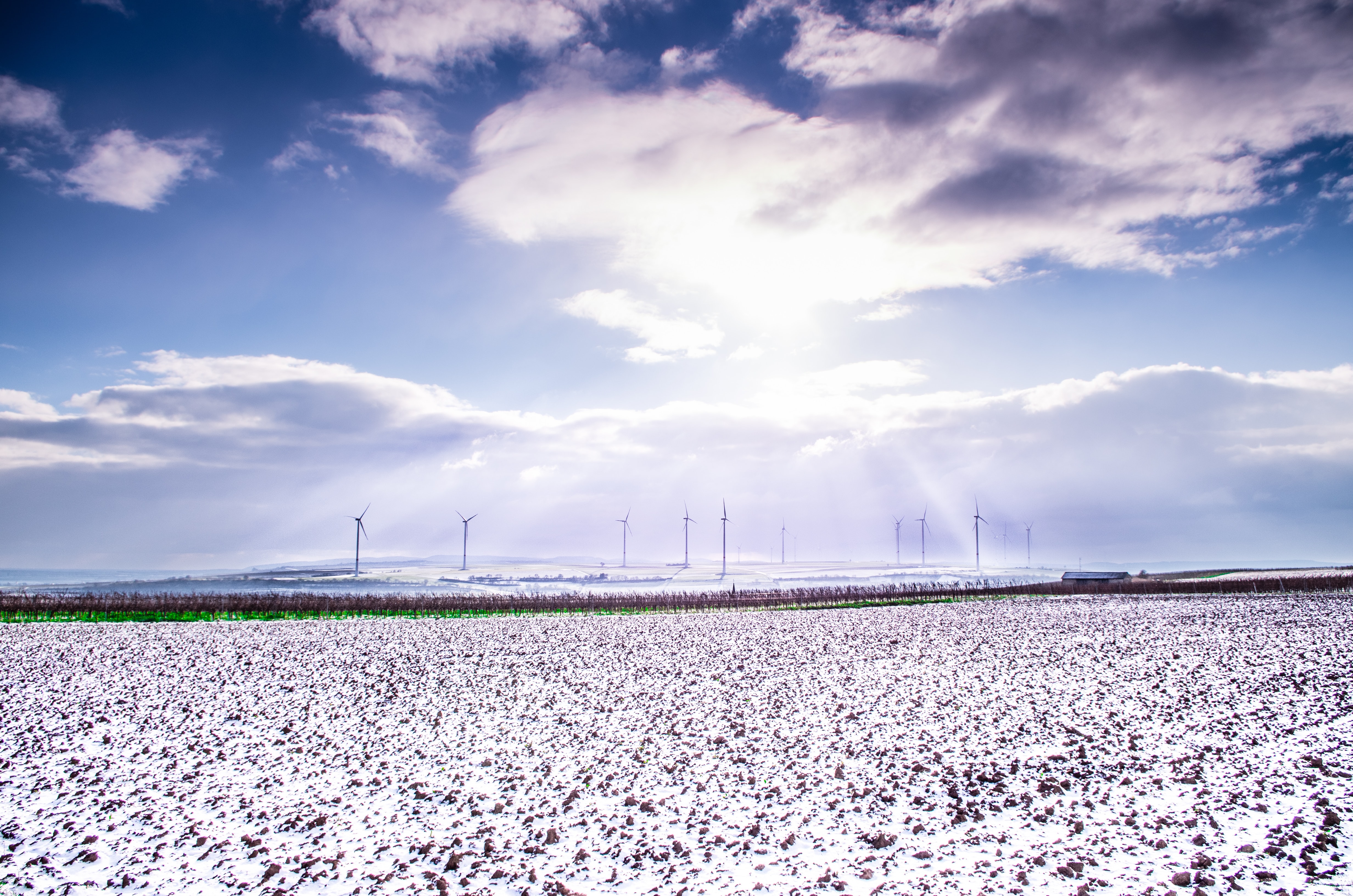Mitigating Climate Change — going beyond low carbon and zero carbon to carbon negative

The Low Carbon Economy meets Climate Finance
There are now substantial targets (thousands of companies and funds) with Net Zero goal commitments worldwide. This is excellent news — that so many large companies have established targets is the first step toward solving the climate crisis, and to make that real, two questions:
- Is it fast enough? Is “Net Zero Carbon by 2050” going to be soon enough?
- Is Net Zero itself adequate?
The science says “no” and common sense says “it depends.” So many major players are now focused on solutions that we no longer lack the will (aside from the occasional greenwasher) nor is there a lack of funding to “get there from here”. What’s missing? We have to make sure we set the right targets then work together to achieve them. “Right” includes massive sequestration using nature and biology, being extremely careful to rely on technology that, history shows, can easily backfire.
The capital required to help de-carbonize our economy, including for arguably the leading strategies of sustainable food systems, often featuring grass-fed cattle (using adaptive multi-paddock or AMP grazing) and several related aspects of generative and ecorestorative agriculture – whatever rebuilds topsoil and stores carbon, improves water cycles, etc., can be combined with massive-scale forestry, in various forms, depending on the locations, available space, natural habitat, etc. Several words with “forest” in them capture this: forest management (keeping remaining forests intact has to be top of the list), agroforestry (food forests, with crops planted between trees), afforestation (adding trees to regions devoid of any tree cover previously) and reforestation(planting trees in areas where there were previously trees, lost to deforestation). We see new examples of carbon sequestration projects that make good business sense, though this is an area of research that must include fast-growing plants like bamboo as well as trees (case study example from the Philippines, a 27-year old stand of bamboo).
Fire prevention also takes on an increasingly important role, but some fires — not the ones in California and Southern Europe recently — are part of restoring healthy soils. Generally, though, climate change raises the difficulty level of keeping forests intact if the water cycles are disrupted in ways that lead to droughts.
Using capitalism’s market forces to scale, some new investors are based in the US (one East Coast source is now investing in regen farms all across the country), but it is actually a global phenomenon. See attached or link. It is finally catching on! About time, eh?
This news was originally sent to me by our S. African Affiliate, Hugh Goble, working in the regen ag / no till farming space in W. Africa and Southern Europe (Spain). The report was authored by the Croatian Institute, the Delta Institute and the Organic Agriculture Revitalization Strategy. Good people!
What exactly caught our attention? Recent feature article headline at Regenerative Agriculture Investing: 70 Investment Groups Worth $47.5bn
To see how this space has evolved since 2014, prior articles tell the story via a 3-page introduction, or for the financial news, check out
1. Regenerative Agriculture is Having a Moment and 70 Investments Worth $47.5bn are in it; https://agfundernews.com/regenerative-agriculture-investing.html (may require a subscription, so I’ve reprinted it below), or
2. How Investing In Regenerative Agriculture Can Help Stem Climate Change Profitably; https://www.forbes.com/sites/devinthorpe/2018/12/12/how-investing-in-regenerative-agriculture-can-help-stem-climate-change-profitably
We have spoken to 3 of the 5 top funds they mention – Almanac, Fifth Season and Renewal Funds (this last one invested in our former portfolio company, Farmhouse Culture), and thus we now have no choice but to add our own voice and capital, alongside this article (piling on, as it were), to fan those “carbon negative” trends with compelling evidence that the space is now scaling rapidly.
This is amazing news! But will it scale quickly enough? There is now even stronger evidence, beyond the UN Special Report (“SR2”) on soils came out before the COVID pandemic, that carbon in soils and variations on “natural” climate solutions are the better approach than an overreliance on technology, as there are risks that we won’t be able to manage the unintended consequences. Biology, on the other hand, is nature’s design, and always works.
Although the UN SR2 uses the word “soil” 2,624 times, and “carbon” an additional 2,046 times, there are no references to regenerative agriculture whatsoever. No wonder nobody I know has read it or talks about it!
This isn’t right/wrong, but a healthy debate about our best prospects for eliminating the worst effects of climate change while we still have time.
The Biden Administration has re-joined the Paris Accord, and policies are falling into place in support of massive capital mobilization like the world has never seen before (reminiscent of times of war, but where the “enemy” is greenhouse gases), enabling all of us to happily side-steps politics and remember the original meaning of the word “conservative”.
COVID was a wakeup call about healthy food, nutrition and breathing. Even if you are not as concerned about climate change (think it is a hoax, and COVID was invented in a lab, etc.), you still have to eat.
In the UN SR2 report’s “adaptation and mitigation response options” there is not much credit given to the potential for holistic grazing management: “While managed pastures make up only one-quarter of grazing lands, they contributed more than three-quarters of N2O emissions from grazing lands between 1961 and 2014 with rapid recent increases of N inputs resulting in disproportionate growth in emissions from these lands (medium confidence). Grazing lands (pastures and rangelands) are responsible for more than one-third of total anthropogenic N2O emissions or more than one-half of agricultural emissions (high confidence).”
Perhaps that means the authors have low confidence in conversion of grazing lands to serve as carbon sinks when the only purpose is grazing animals. Subtle but important difference that has proven to be quite lucrative and effective: when grazers are mixed with certain types of forestry (agroforestry), minimum tillage food crops (especially when certified as organic) and as a way to regenerate degraded soils to regain productive capacity. These options rank among the highest performance for Carbon Dioxide Removal, per SR2:
- afforestation/reforestation (0.5–10.1 CO2-eq yr-1) (medium confidence),
- soil carbon sequestration in croplands and grasslands (0.4–8.6 CO2-eq yr-1) (high confidence) and
- Bioenergy with Carbon Capture and Storage (BECCS) (0.4–11.3 CO2-eq yr-1) (medium confidence).”
SR2 went to say: “Several mitigation response options have technical potential for >3 GtCO2-eq yr-1 by 2050 through reduced emissions and Carbon Dioxide Removal (CDR) (high confidence), some of which compete for land and other resources, while others may reduce the demand for land (high confidence).
Estimates of the technical potential of individual response options are not necessarily additive. The largest potential for reducing AFOLU emissions are through
- reduced deforestation and forest degradation (0.4–5.8 GtCO2-eq yr-1) (high confidence),
- a shift towards plant-based diets (0.7–8.0 GtCO2-eq yr-1) (high
confidence) and - reduced food and agricultural waste (0.8–4.5 CO2-eq yr-1) (high confidence).
- Agriculture measures combined could mitigate 0.3–3.4 GtCO2-eq yr-1
(medium confidence).
There is room for innovation both with land use and with combining these better and best practices to optimize the mix for productivity/profitability and drawdown. See also SR2’s Section 2.6.2, Integrated pathways for climate change mitigation.
Media & Education — Storytelling to Teach and Reach Key Hubs of Influence
Lastly, two award-winning films worth mentioning, first, a must-see documentary that is brilliantly clear and inspiring called: Kiss the Ground (“stop treating the soil like dirt”). As of Jan 2021 an educational version is also available at kissthegroundmovie.com/for-schools
Second, an entertaining film that may help rekindle interest in farming among young people, called The Biggest Little Farm. The 200-acre farm near Los Angeles uses Biodynamic approaches, arguably a type of “beyond organic” regenerative agriculture (an article from 2018 that makes this case, but also points out that “regenerative capital” is the path to scale). This documentary is extremely entertaining and educational, already with greater than 90% approval, and highly recommended. Trailer
Without farmers, what’s the point?
Live long and regenerate,
Daniel
Daniel N. Robin
Managing Partner
See related articles




